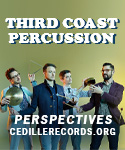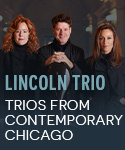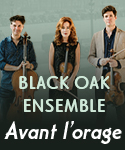It’s a function of just how seriously the mad glut of releases has buried interesting new projects in a general welter of ennui that this very worthy series of Tartini’s complete violin concertos (135 of them!), of which this is Volume 10, has received so little attention in the international music press. Imagine if the project had been announced in the mid-1980s by a major label such as L’Oiseau Lyre, featuring, say, the Academy of Ancient Music. The magazines (especially the British ones) would be raving, feature interviews would follow one on top of the other, and the vast majority of the classical-music-loving public would sample at least a volume or two, for in the final analysis, what’s not to like? How times have changed!
No matter: The 10 members of L’Arte Dell’Arco clearly relish this music. They play with all of the rhythmic panache we expect from period groups, but they don’t drive the music as relentlessly as some, and they aren’t afraid to make a warm and beautiful sound in music that benefits from a sunny, relaxed approach. Although Tartini clearly based many of these works on Vivaldi’s example, his melodies are more expansive, his structures more developed, and the emphasis on virtuosity is necessarily greater. Many of these pieces play for more than 15 minutes, and a couple have alternate movements that are thoughtfully included here (but check the notes for the proper explanation of the movement titles and order for the G major Concerto D83, incorrectly listed in the booklet’s track index though correctly arranged on the CD itself).
Perhaps the most interesting of these works, melodically speaking, is the Concerto in B-flat D117, with its impressively grand outer movements and spicy use of dissonance to provide harmonic color. The final work on Disc 2, the Concerto in A D95 sports an extraordinarily expressive Grave slow movement, beautifully played by Giovanni Guglielmo. Another A major concerto (there are three in all included here), D94, opens with a charming Largo andante and concludes with a pastoral allegro in compound meter, which the excellent notes suggest might have destined the work for Christmas performance–a logical deduction, as I’m sure you’ll agree when you hear it. In short, these are very lively and characterful works, and they receive equally characterful performances, very faithfully and realistically recorded. You can hear genuine chamber music give-and-take between the players, and the alternation of a quite prominent harpsichord continuo with a chamber organ ensures that aural fatigue never sets in over the long term.
I have to confess that hearing this set makes me sorry that I have not had the opportunity to bring this series to the attention of music lovers sooner. Dynamic is an enterprising label that has done all of the things that more famous (at least on these shores) “national” labels such as Hyperion, Chandos, Erato, Ondine, or MDG do so well: explore their home country’s musical patrimony using fine local talent. There’s a tendency almost everywhere to dismiss anything Italian after Vivaldi that’s not an opera, and as this release proves, the rush to judgment is certainly not justified. Certainly these enthusiastic, joyous, and expressive performances demonstrate that we all need to pay closer attention to this particular musical legacy (and the labels exploring it). So why not start here?
































